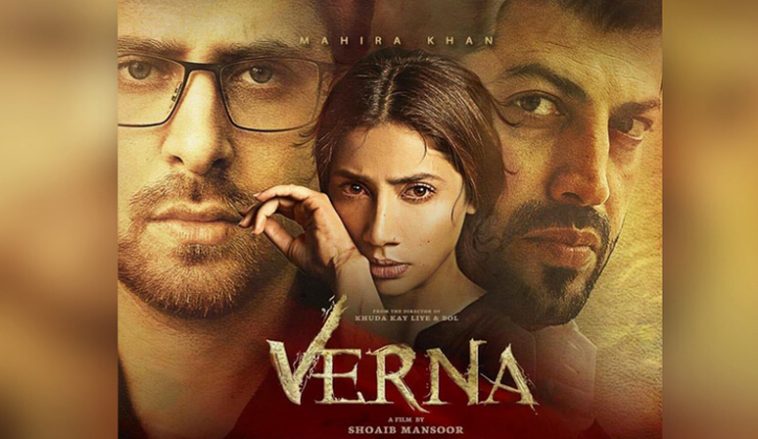In late twentieth century a German anthropologist Grant McCracken described what he called “The Diderot Effect”, a social phenomenon related to a product, that comprises two ideas. The first, a new product purchased by consumers will be cohesive to their sense of identity & will be complementary to one another. Then second states, that the introduction of a new possession that is deviant from the consumer’s already possessed goods, can result in a process of spiraling consumption and the user may not like his/her already possessed products because of the newly bought product.
Looking one year back since its release on 17th November 2017, the “Diderot Effect ” could be applied in many ways to Shoaib Mansoor’s third directorial Verna, a film that was loved by some, hated by others but ignored by none.
As a fresh film product when Pakistani cinema was churning out rom-coms here and there, the film because of its daring topic and Mansoor’s name, found itself coherent with the first clause of Diderot’s theory. The film was welcomed, pre release because the audience found themselves in a complimentary and relatable equation with the film. At a time when women were being raped and voices were being in raised all across subcontinent, Verna couldn’t have found a more suitable production and release timeline. Post release, however it created an even stronger debate, where people remained divided on its flaws and strengths, the division wasn’t limited to critics and audiences. The very team which made this iconic film remained divided on many creative and financial aspects. It was, however Mansoor’s captaincy that kept the project floating and completed it timely also HUM films buying the film on a profitable price, keeping the creators safe from any financial losses.
According to our reliable sources, the team behind Verna was aware that justice isn’t being done to the film on both financial and technical levels. Mansoor’s idea was to make a “sasti film” to be entirely shot in Islamabad and make all the possible efforts that could reduce the production cost. Male lead Haroon Shahid, a singer barely known to masses, was paid a negligible salary while superstar Mahira Khan who agreed on doing the film in less than 10 lacs (she was charging around 50 lacs per film and 1 crore per advertisement at that time) were just the initial steps.
Then they shot the film at real locations and mostly in day light. Music again involved Mansoor and Haroon themselves in some songs making the cost even lesser. Even the film’s editing was done by Shoaib Mansoor’s son, Zohaib Mansoor. The Khuda Kay Liye director, wouldn’t care about the costumes of the cast, also most of cinematography was done by a relatively unknown man and not to mention the supporting actors who were all friends or relatives of the production team. All this done and the film was made under 1 crore rupees, however film was publicised to be made on 5 crores. The film according to wikipedia page earned around 9 crores though the actual business it did was far less.
So what went wrong with Verna? Basically a low budget damaged the very fresh idea that film wanted to explore. Shoaib’s earlier works weren’t technically strong either and focused on content rather than gloss but Verna turned out to be worst, one reason being it is film’s poor editting by Zohaib, as already mentioned. KKL & Bol both were edited in India and the results look obvious. Had Verna been made on a slightly bigger scale, the situation could have been different. Shoaib Mansoor is notorious for being “doing whatever he wants” during the creation and shooting process of his projects. This strategy till Verna did wonders, however Verna being an unfortunate film had so many variables against its favor. That’s why later when technically stronger films with broader canvases were released, Verna‘s stature abrogated inevitably. People started raising more and more fingers towards this Mahira Khan starer now that they had “purchased and seen newer film products” hence the second clause of Diderot effect becoming applicable.
However despite being a weaker film on technical front this film will maintain a special place when the era of 2010s of Pakistani films will be discussed. Its a Shoaib Mansoor’s film, which talks rape and dirty power politics in an audacious way and is dark in its nature and it will be seen as a special film despite its flaws in its production and script.
What Pakistani cinema makers could learn from “Verna” is that subject oriented films could be financially viable if made on a smaller scale, yet a slightly generous budget could make serious cinema even more profitable. Similarly scripts should not be written and developed by a single mind and “multi mind approach” should be applied ensuring lesser flaws in them because sometimes even brilliant minds like Mansoor’s can create questionable stories and screenplays.



Comments
Loading…
Comments
0 comments